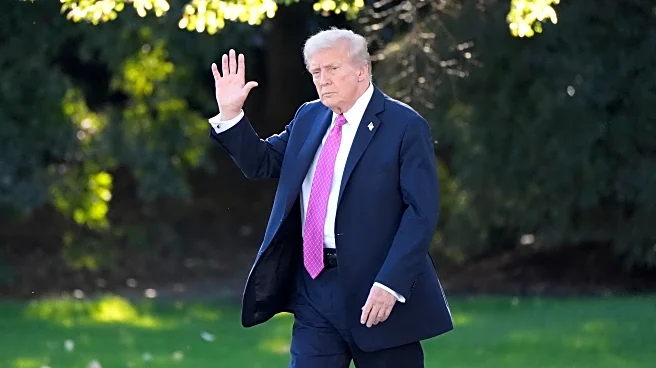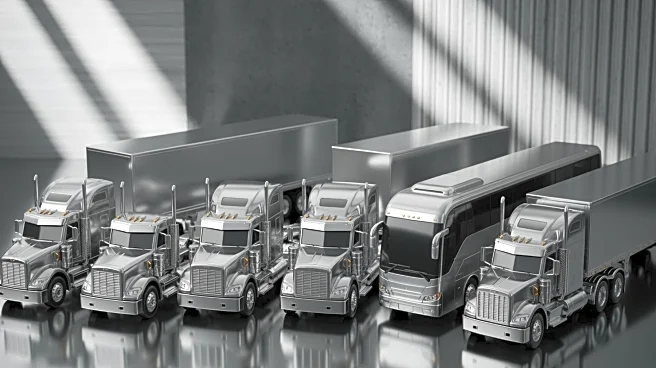What's Happening?
President Trump has announced a new tariff system targeting imports of medium- and heavy-duty vehicles (MHDVs), parts, and buses, following a report from the Secretary of Commerce. The report concluded that these imports pose a threat to U.S. national
security. The tariffs, set at 25% for MHDVs and parts, and 10% for buses, aim to reduce dependency on foreign suppliers and bolster domestic production. The decision is based on findings that foreign import penetration in the U.S. market is significant, with 43% of Class 4 through 8 MHDVs and 50% of Class 8 MHDVs being imported. The Secretary highlighted the critical role of MHDVs in military readiness and national infrastructure, emphasizing the need for a secure domestic supply chain.
Why It's Important?
The imposition of these tariffs is significant as it seeks to strengthen U.S. national security by reducing reliance on foreign imports for essential vehicles and parts. This move is expected to encourage domestic manufacturing, potentially creating high-quality jobs and fostering innovation within the U.S. MHDV industry. By stabilizing the market share of U.S.-produced MHDVs at approximately 80%, the tariffs aim to ensure that the U.S. can maintain its military and infrastructure capabilities without foreign dependency. However, this could lead to increased costs for U.S. businesses relying on imported MHDVs and parts, potentially affecting industries that depend on these vehicles for logistics and transportation.
What's Next?
The Secretary of Commerce will monitor the impact of these tariffs and may adjust them as necessary to address national security concerns. The administration plans to establish a process for including additional vehicle parts within the tariff scope if needed. The tariffs will take effect on November 1, 2025, and will remain in place unless modified or terminated. Stakeholders, including U.S. manufacturers and foreign trade partners, are likely to respond to these changes, potentially leading to negotiations or adjustments in trade policies.
Beyond the Headlines
This development highlights the ongoing tension between protecting national security and maintaining open trade relations. The tariffs could strain U.S. relations with countries that export MHDVs and parts, potentially leading to retaliatory measures. Additionally, the focus on national security underscores the broader trend of prioritizing domestic production capabilities in critical industries, which may influence future trade and economic policies.














